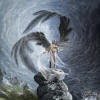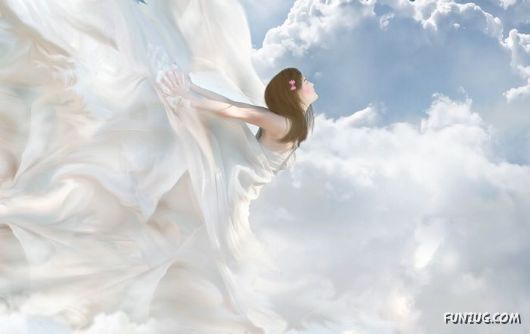|
THE HOLY MASS Catalina Rivas is from Cochabamba, Bolivia, now lives in Mérida, Yucatán, México. She is said to receive Messages from Jesus, Mary, and the angels. She has the approval of her Bishop, René Fernández Apaza, who has given his imprimatur to her Messages. The following text is the reproduction of booklet, “The Holy Mass,” in which Our Lord and Our Lady explain to Catalina what is really going on during the Mass in the spiritual realm, and how we should be more concentrated on the great mysteries that are taking place.
Right after the “Offertory”, Catalina had a vision. She saw from the side of each person present in the Cathedral, another person emerged, and soon the Cathedral became full of young, beautiful people. They were dressed in very white robes, and they started to move into the central aisle and, then, went towards the Altar. Our Mother said: “Observe. They are the Guardian Angels of each one of the persons who are here. This is the moment in which your guardian angel carries your offerings and petitions before the Altar of the Lord.” At that moment, she was completely astonished, because these beings had such beautiful faces, so radiant. Their countenance was very beautiful with almost feminine faces; however, the structure of their body, hands, height were masculine. Some of them were carrying something like a golden bowl with something that shone a great deal with a golden-white light. The Virgin Mary said: “They are the Guardian Angels of the people who are offering this Holy Mass for many intentions, those who are conscious of what this celebration means. They have something to offer the Lord.” Behind the first Angels came others who had nothing in their hands; they were coming empty handed. The Blessed Mother said: “Those are the angels of the people who are here but never offer anything. They have no interest in living each liturgical moment of the Mass, and they have no gifts to carry before the Altar of the Lord.” At the end of the procession came other angels who were rather sad, with their hands joined in prayer but with their eyes downcast. “These are the Guardian Angels of the people who are here, but do not want to be, that is to say, of the people who have been forced to come here, who have come out of obligation, but without any desire to participate in the Holy Mass. The angels go forth sadly because they have nothing to carry to the Altar, except for their own prayers. Do not sadden your Guardian Angel. Ask for much, ask for the conversion of sinners, for peace in the world, for your families, your neighbors, for those who ask for your prayers. Ask, ask for much, but not only for yourselves, but for everyone else.” The procession was so beautiful that it would be difficult to compare it to another. All those celestial creatures bowing before the Altar, some leaving their offerings on the floor, others prostrating themselves on their knees with their foreheads almost touching the floor. And as soon as they arrived at the Altar, they would disappear from her sight. |

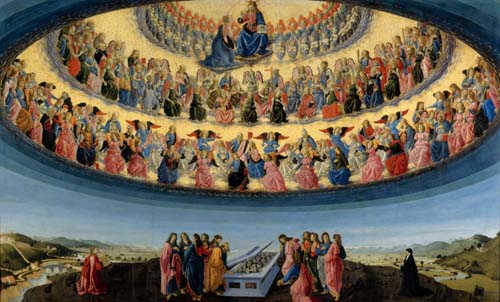
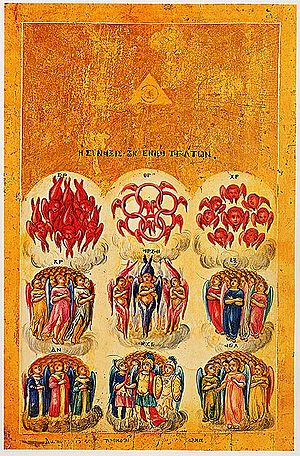
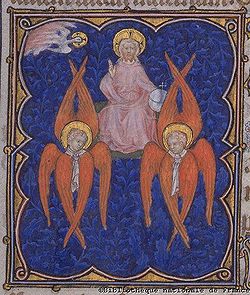
 Cherubim
Cherubim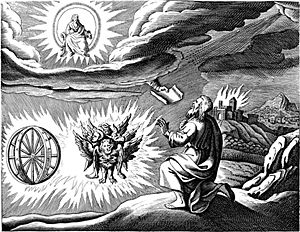 Thrones
or Elders
Thrones
or Elders The
word "archangel" comes from the Greek αρχάγγελος (archangělǒs),
meaning chief angel, a translation of the
Hebrew רב־מלאך (rav-mal'ákh) It derives from
the Greek archō, meaning to be first in rank
or power; and aggělǒs which means messenger.
The word is only used twice in the
The
word "archangel" comes from the Greek αρχάγγελος (archangělǒs),
meaning chief angel, a translation of the
Hebrew רב־מלאך (rav-mal'ákh) It derives from
the Greek archō, meaning to be first in rank
or power; and aggělǒs which means messenger.
The word is only used twice in the
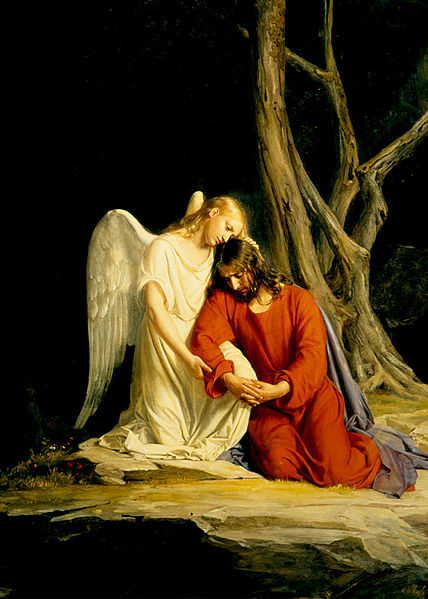 The
"angels", (malakhim Greek angělǒs) messengers, are the
lowest order of the angels, and the most recognized. They are the
ones most concerned with the affairs of living things. Within the
category of the angels, there are many different kinds, with
different functions. The angels are sent as messengers to mankind.
The
"angels", (malakhim Greek angělǒs) messengers, are the
lowest order of the angels, and the most recognized. They are the
ones most concerned with the affairs of living things. Within the
category of the angels, there are many different kinds, with
different functions. The angels are sent as messengers to mankind.
